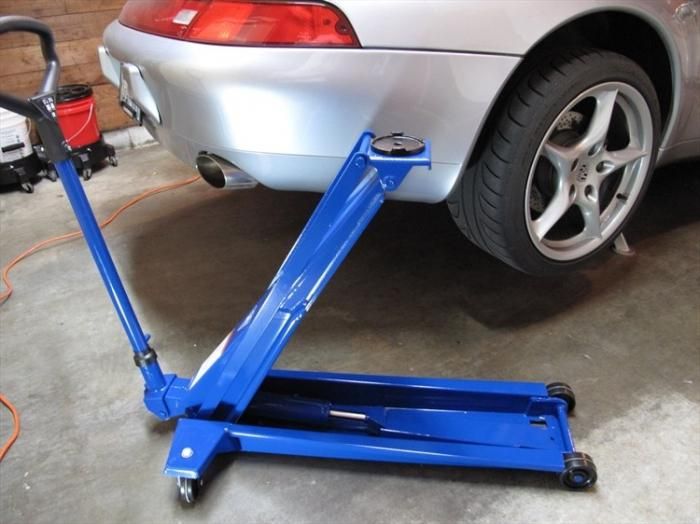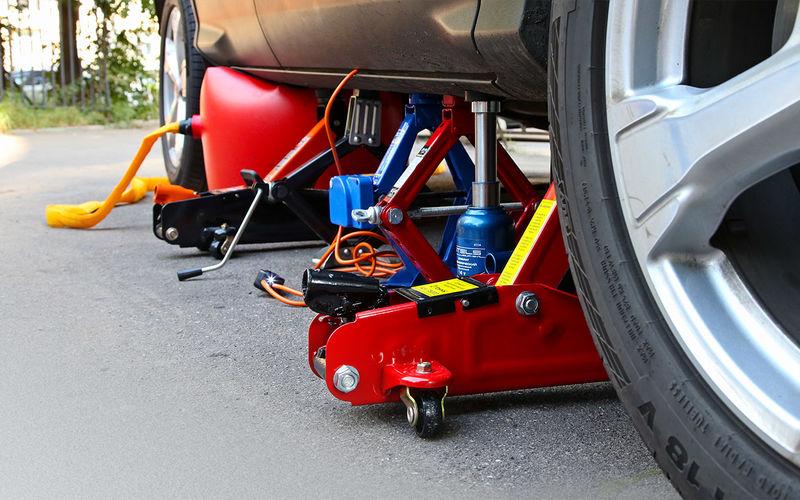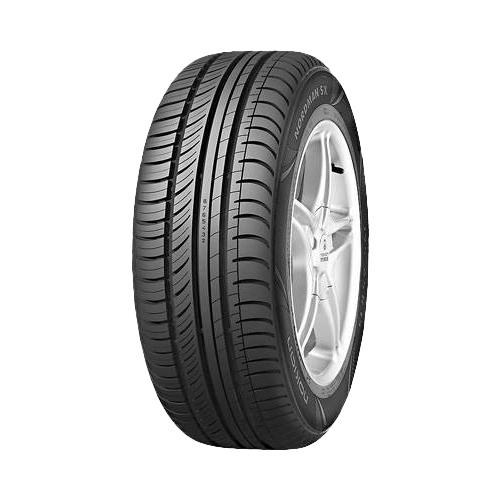How Much Do You Know about Car Jack Stand?
How to choose a good jack

Very often, the choice of a car jack stand by users occurs according to a type preference, bypassing the design nuances, as well as, in a series of cases, even load capacity parameters. It is worth noting that this approach does not guarantee at all that the model chosen by you will be able to serve for a long time and become a reliable element in your personal toolkit. In this regard, the journal "Expertology" recommends that you pay attention to the following criteria:
Capacity . The first and main aspect of the choice, which should be treated with great care. When choosing a jack, be sure to estimate the actual weight of your vehicle (taking into account additional things in the trunk, passenger compartment, etc.) and further build on the resulting figure. In the general case, screw jacks are suitable for passenger cars, designed for weight from 1.5 to 3 tons. For SUVs are ideally suitable podkatnye (at service stations) or bottle jacks with a lifting capacity of 3-8 tons. All that has indicators above these numbers - options for trucks.

Pickup height. This parameter is one of the most undervalued, and, in fact, the most important after the actually raised weight. It is determined by the ground clearance of the car, which must be taken as the standard. In this respect, the least of all problems will be experienced by owners of off-road vehicles and lorries, whose vehicle clearance will allow to easily place under-the-bottom jacks, bottle, rack and other types of jacks (with a pickup height of more than 150 millimeters) under the bottom. However, if the car is passenger and the ground clearance does not exceed 150 millimeters, then only screw and sliding models will be the most likely options.
Lifting height . Characteristic showing to what height from the fulcrum the jack is able to lift the planned load. The range of variation here is from 300 to 500 millimeters, and this height is often enough to replace the wheel or other repairs. If it is necessary to obtain more significant lifting heights, the acquisition of rack jacks should be considered. These models are able to lift cars up to 1000 millimeters above the ground and are used mainly when driving off-road.
Top jacks
1. WIEDERKRAFT WDK-81885
2. Matrix 51040
3. KRAFT CT 820003
4. SKYWAY S01802005
Top bottle jacks
1. Kraftool 43463-6
2. AIRLINE AJ-TB-12
3. AUTOPROFI DG-08
4. Bison 43060-12
20 BEST SUMMER TIRES

Warm season for a significant part of motorists means the need to change the car to summer tires. Experts Expertology, examining the extremely voluminous market of summer tires, formed a rating of models that most deserve attention on one or another criteria. And for starters, we describe these very criteria, as well as what should be guided by the choice.
How to choose summer tires
This parameter is quite obvious in terms of selecting the appropriate option. It is determined by the ratio of such indicators as width, height and bore diameter. The latter is quite rigidly tied to the size of the disk, and with the first two there are variations when choosing.
With an increase in tire width, the contact patch automatically increases and, as a result, the road grip improves. It would seem that this is only good, but this automatically implies a weighting of tires, a decrease in the characteristics of the dynamics of the car, an increase in fuel consumption, and a deterioration in handling on a bad road. Plus, increasing the size of the contact patch increases the likelihood of a dangerous aquaplaning effect. The width of the tires can be calculated in millimeters.
The term “height” is understood to mean the vertical dimension of the profile, which is measured in% of the tire width. Conventional division into low-profile (equal to 55 percent or less), high-profile (from 60 to 75 percent, inclusive) and full-profile (from 80 percent) is generally accepted. Full-profile are used for the most part to equip off-road vehicles, which have to overcome all the difficulties of country roads. The rest are mainly used on passenger cars.
With the expediency of choosing one profile or another, the situation is as follows. There is a direct correlation - with decreasing profile, the handling improves, but at the same time tires are more sensitive to a faulty road up to the risk of damage to the discs on particularly pronounced coating defects. Accordingly, it makes sense to give preference to the minimum profile only when driving regularly almost exclusively along routes with a predictable level of coverage and without special speed limits.
Tread pattern
Despite all the seemingly "artistic", it is quite a physical indicator, which directly affects a lot of moments, and they, in turn, determine - where, when and how most appropriate and safe to use the selected tires. There are three main types of drawing "rubber":
Symmetric non-directional. This is a kind of classic, the most massive version. Very often, inexpensive tires have just such a tread and most often it is with this equipment that cars go on sale directly from the factory. It is best suited for regular routine traffic in the city and highway, where the characteristics of the coating can vary considerably. Such wheels can be swapped without any problems.